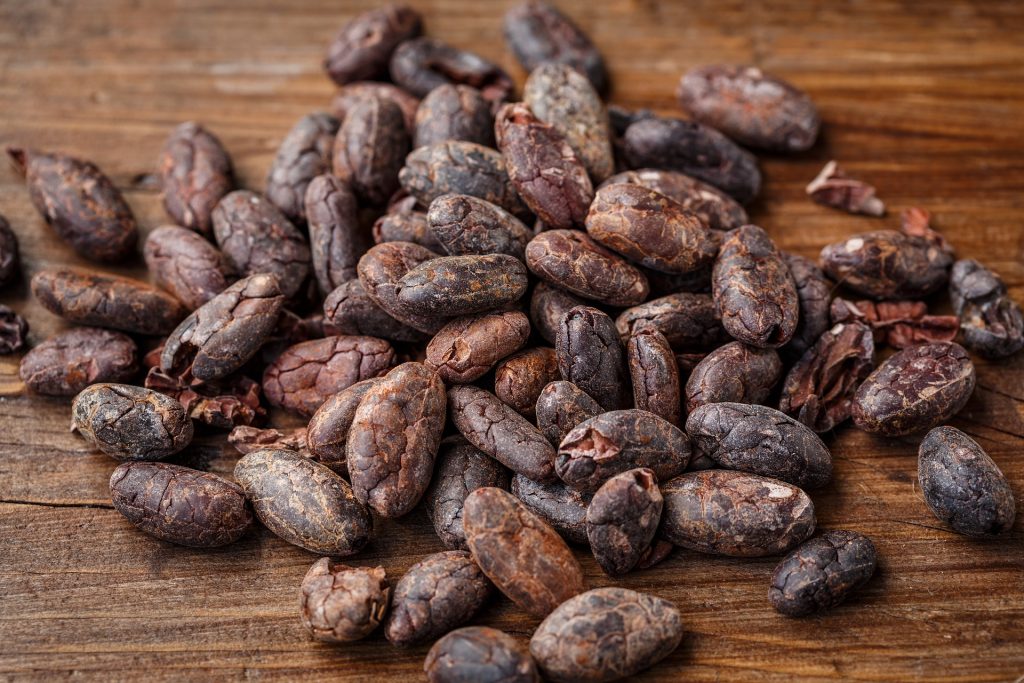 Antioxidant phytochemicals found ubiquitously throughout the plant kingdom. Edible plants provide a wide diversity of antioxidants with rich sources being fruits, vegetables, nuts, seeds, tea, wine and chocolate. Evidence suggest that phytochemical antioxidants are beneficial to the health and may protect from a number of Western lifestyle diseases including cardiovascular disease, obesity, cancer, metabolic syndrome, diabetes, and other diseases of inflammations and oxidative stress. Tea and coffee are excellent sources of antioxidants and the health effects of both have been well reported. Many people consume tea and coffee for their antioxidants and their health effects However, tea and coffee are also rich in stimulatory methylxanthines, including caffeine, and as a result caffeine sensitive individuals may need to avoid both tea and coffee because of the stimulatory effects of caffeine on these individuals. This removes a useful source of antioxidants from the diet of such individuals.
Antioxidant phytochemicals found ubiquitously throughout the plant kingdom. Edible plants provide a wide diversity of antioxidants with rich sources being fruits, vegetables, nuts, seeds, tea, wine and chocolate. Evidence suggest that phytochemical antioxidants are beneficial to the health and may protect from a number of Western lifestyle diseases including cardiovascular disease, obesity, cancer, metabolic syndrome, diabetes, and other diseases of inflammations and oxidative stress. Tea and coffee are excellent sources of antioxidants and the health effects of both have been well reported. Many people consume tea and coffee for their antioxidants and their health effects However, tea and coffee are also rich in stimulatory methylxanthines, including caffeine, and as a result caffeine sensitive individuals may need to avoid both tea and coffee because of the stimulatory effects of caffeine on these individuals. This removes a useful source of antioxidants from the diet of such individuals.

Cocoa contains a range of proanthocyanidins antioxidants. These antioxidants belong to the flavonoid group of phytochemicals. Proanthocyanidins are also known as condensed tannins and are polymers of the same catechins (flavan-3-ols) found in tea. Proanthocyanidins can be categorised as A-type or B-type based on the way the catechin units are linked together. The large molecular size of the proanthocyanidins makes it difficult for the small intestine to absorb them directly, and only smaller dimers, trimers and tetramers may be absorbed. Most absorption of the proanthocyanidins occurs after degradation to smaller phenolic acids and phenylvalerolactones in the colon. Drinking cocoa may therefore provide large amounts of phenolic acids and phenylvalerolactones to the consumer, which may explain the cardioprotective health effects of the drink. Grape seed extract and pine bark extract also provide a rich source of proanthocyanidins.
An alternative hot drink that may be suitable to caffeine sensitive individuals is cocoa. Cocoa also contains methylxanthines, but the caffeine content of cocoa is much lower than tea and coffee. Coffee can have from 100 to 200 mg of caffeine per cup, tea can have from 100 to 120 mg caffeine per cup, whereas cocoa only has from 5 to 10 mg of caffeine per cup. Cocoa contains other methylxanthines including theophylline, which is also found in tea, and theobromine. The theophylline content of cocoa is very small, but there are substantial amounts of theobromine. A cup of cocoa may contain between 100 and 200 mg of theobromine. However the advantage of theobromine to the caffeine sensitive individual is that theobromine is much less stimulatory compared to caffeine. Caffeine sensitive individuals may therefore be be able to consume cocoa without the overstimulation they obtain from tea or coffee. This makes cocoa a viable alternative to tea and coffee especially when the health effects of cocoa are considered.
Both tea and coffee contain large concentrations of antioxidants. In coffee the main antioxidant phytochemicals are hydroxycinnamic acids such as chlorogenic acid. In tea the main antioxidants are called catechins, and they belong to the flavan-3-ol group of flavonoids. These include catechin (C), epicatechin (EC), epicatechin gallate (ECg) and epigallocatechin gallate (EGCg). The antioxidant in tea and coffee provide a general antioxidant protection to the consumer, and this may be the reason for the health effects of the drinks. However, cocoa also contains antioxidants, and these may explain the health effects attributed to drinking cocoa, effects that include beneficial effects on the cardiovascular health. The main antioxidants in cocoa are a group of flavonoids called the proanthocyanidins. These are polymers of the same catechin found in tea, strung together in large chains of various sizes. The proanthocyanidins vary based on the type and number of different catechins they contain as well as the way they are bonded together.

Cocoa is a useful alternative to tea and coffee. Although the methylxanthine content of all drinks is similar, the types of methylxanthines differ. Coffee contains mainly caffeine, tea contains caffeine and some theophylline, and cocoa contains mainly theobromine with small amounts of theophylline and caffeine. As caffeine is the most stimulatory of the methylxanthines, coffee is the most stimulatory drink, followed by tea and then cocoa. Caffeine sensitive individuals may therefore be able to drink cocoa without being over stimulated. Cocoa beans (pictured) are rich in phytochemicals that may benefit health.
Because proanthocyanidins are large molecules, they may not be directly absorbed in large amounts. The degree of absorption of proanthocyanidins is likely related to the size of the molecules. For example proanthocyanidin dimers made up of two catechin units, are only absorbed at about 10 % of the rate of single catechin compounds. As the size of the proanthocyanidins increase to trimers (three catechin units) and tetramers (4 catechin units), the absorption rate falls further. Proanthocyanidins over 4 catechin units in size, are likely not absorbed at all from the small intestine. There is also very unlikely to be depolymerisation of the proanthocyanidins in the small intestine. Therefore the proanthocyanidins, on the large part, pass to the colon where they are degraded by gut bacteria to smaller phenolic acids and phenylvalrolactones. These smaller compounds can then be absorbed through the colon gut barrier, and it is these compounds that may explain the health effects of cocoa.
Eat Well, Stay Healthy, Protect Yourself
RdB
